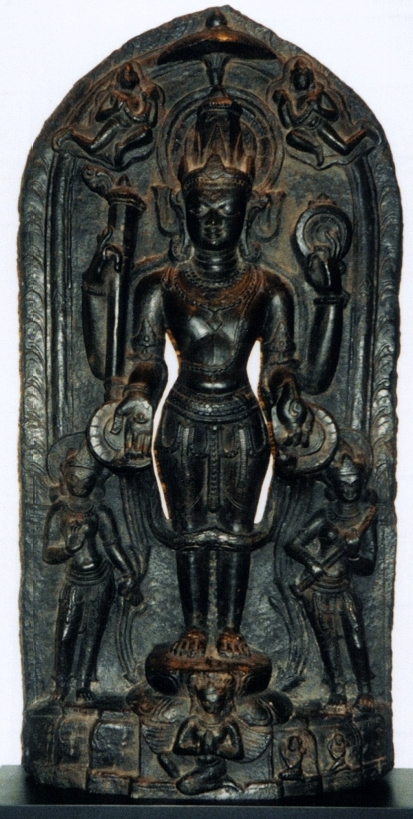VISHNU
N.E. India, probably Bihar
Pala, 11th/12th Century
Polished basalt
Height 112 cm
A Polished black basalt stele of the four-armed god Vishnu standing on a lotus base in the samapada posture, holding his attributes of gada (mace), sudarshana chakra (discus, used a weapon), and panchajanya shankha (conch shell), while his fourth hand is in varada mudra, the gesture of beneficence. The deity is wearing a short pleated dhoti secured by an elaborate beaded festoon, multiple necklaces and other jewelry, a sacred thread that runs over his left shoulder and a long garland that comes down to his knees. The rounded face with a raised urna is surmounted by a distinctive tiara. Conforming to tradition, Vishnu is flanked by his wives Lakshmi and Sarasvati, holding a flywhisk and vina respectively. Garuda is kneeling at his feet, while two apsaras adorn the heavens near his head. Traces of substances used in worship at the god's feet.
Vishnu is the Supreme God of Vaishnavism, one of the three main sects of Hinduism. Vishnu is also known as Narayana and Hari. Vishnu, along with Brahman and Shiva one of Hinduism's trinity, is seen as the all-pervading essence of all beings, the master of past, present and future, the creator and destroyer of all existences; one who supports, preserves, sustains and governs the universe and originates and develops all elements within.
Provenance: Sotheby's, New York

|
 HOME
HOME
